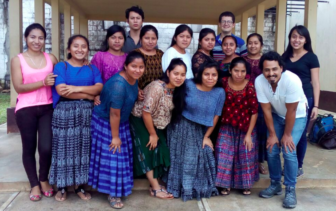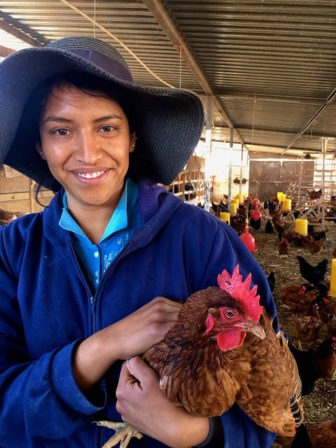In 2017, several members of Social Lab Guatemala, an incubator for social business, were inspired to build a national model for regenerative agriculture in Guatemala. Their inspiration led them to strategic partnerships with Regeneration International (RI) Main Street Project (MSP) and ultimately to the formation of Regeneration Guatemala.
Regeneration Guatemala’s mission is to rebuild the deteriorated social, ecological and economic systems in Guatemala by transforming the agricultural landscape through regenerative agriculture and land-use practices, with a focus on Poultry-Centered Regenerative system design.
The organization is off to a strong start. This year, a team of young entrepreneurs, farming cooperatives and rural community members are in the process of establishing five regenerative poultry farms. These five pilot projects form the centerpieces of five regional demonstration models for how to scale regenerative poultry production while simultaneously developing the regional infrastructure needed to grow a national regenerative agriculture industry. 
RI and MSP both played key roles in the launch of Regeneration Guatemala. Reginaldo Haslett-Marroquin, principal architect of the MSP poultry-centered regenerative agriculture model and an RI founding partner and steering committee member, had this to say about working with the team in Guatemala:
“As a Guatemalan immigrant living mostly in the U.S., but as someone who owes most of my training and professional capacity to the teachings of our elders and our rural community leaders in Guatemala, being able to turn around and bring all of the experience accumulated through years of learning and capacity-building back to Guatemala is really a dream come true. One must not be confused as to what I am bringing back, it is not a foreign idea, it is an idea that was born in Guatemala, in the forest and in the rural communities, which I have been able to further develop with support from people all over the world.”
Haslett-Marroquin says that Regeneration Guatemala is a story of resilience. He explains that the threat to survival caused by the agricultural systems that came out of the “green revolution” can be reversed by reclaiming and adapting traditional and ancient knowledge.
“The answer to poverty and hunger and to developing the capacity of communities to feed themselves, was right there in the communities all along. The time has come to recover what we know, use what we have learned and recall the falsehood of empty promises that corporate factory foods will nourish the world. It is time to engage nature at its best and to unplug from degenerative systems that are destroying our forests and the very ecosystems on which we depend to feed the country.”
Regeneration Guatemala is starting out with five strategically located regenerative poultry projects. But the organization envisions many more as it works to fulfill its long-term vision for achieving high-impact, large-scale change in Guatemala.
A big part of the organization’s commitment involves saving and restoring ancestral knowledge developed and curated by indigenous Mayan cultures throughout the Mesoamerican region. Their practices, production systems and native species have been handed down through generations, and conserved by their descendents, through struggle and resistance. Despite colonization and violence, history and contemporary circumstances make it critical that this ancient knowledge be preserved and put back into practice.
It isn’t just the future of Guatemala that motivates this new organization. By becoming an active contributor to the international regeneration movement, the founders and members of Regeneration Guatemala hope to do their part to help address global warming, feed the country and the world, promote public health and prosperity, and provide the foundation for creating the conditions that ensure global peace and wellbeing.
Stay tuned in for more news from Regeneration Guatemala and the growing regeneration movement around the world by signing up for the RI newsletter here.


